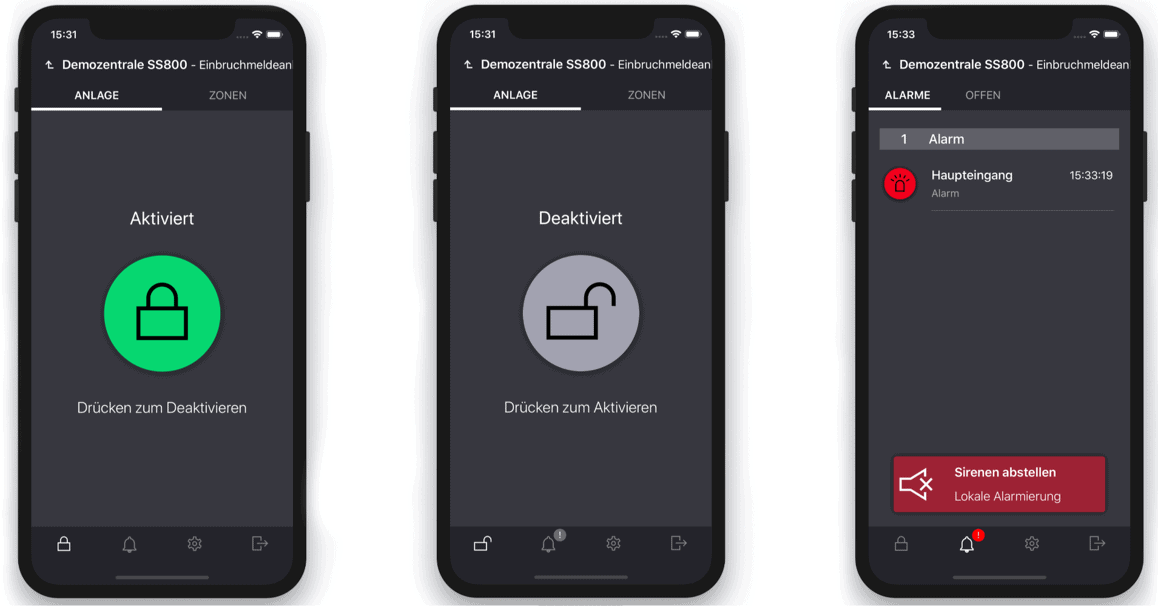Digital applications in safety engineering
The demand for digital helpers that intelligently network several trades in a building is great. With the convenience of having access to various systems from anywhere, such as the security system, the question of benefit versus security inevitably arises.

A digital application for the burglar alarm system is definitely nothing new, and as digitalization continues, the possibilities are becoming more extensive and smarter.
As in almost every area, the opportunities and application possibilities with digital applications are manifold and seem to be limitless. Especially in the lower market segments of intrusion detection systems, there are a variety of offers that allow full access to the system via cloud with a digital application. When an alarm is detected by the motion detector, a photo is automatically taken with the camera integrated in the detector and transmitted to the user's smartphone. However, security applications are also often integrated into smart home systems, which brings additional convenience to the user, as he can manage and switch everything at a glance.
Self-sufficient system provided
However, the question now arises: Where does the convenience and benefit begin with professional security systems of digital applications and what does this mean for the security of the intrusion detection system? The application possibilities should bring a gain and additional benefit to the existing possibilities of a stand-alone intrusion detection system.
Before digital applications can be used, it is important to have a stand-alone intrusion detection system that - without an app - can only be operated with the control devices installed on site, because it can always be the case that a mobile end device is not available for reasons such as an empty battery, non-existent reception or maintenance work on the cloud or server. It is important to distinguish which user has which rights when operating the device. This is the only way to ensure that only manipulations that are purely for operation, such as arming/disarming, are carried out and that parameters are not changed through ignorance, which leads to reduced detection of the system.
Advantages and disadvantages of digital monitoring control
In the event of an alarm, even today the only information available from the alarm transmission side is often that an intrusion alarm has been triggered, for example - without any further information. With the possibility to push events to a mobile application in real time, a location-independent notification can be realized, in addition to the autonomous and locally connected operating device to the EMA system.
However, a professional alarm transmission device is essential. Only with alarm transmission to an alarm receiving point manned during 24 hours does an intrusion detection system achieve its maximum possible effect. With the possibility of having detailed information available by means of a digital application, an intervention can be specifically initiated (or not). A false alarm is reset remotely and the detector is temporarily taken out of service. It is also possible to save travel time during an event analysis, as the event memory can be conveniently viewed from the office.
More convenient management
Access to an intrusion detection system with digital applications can also be very helpful in the daily challenges of operating buildings that are equipped with security systems. During conversion work, shutdowns of zones or individual detectors can be carried out remotely in consultation with the operators on site.
Thus, the building services or the person responsible for safety can operate the system at short notice without being on site. It enables the management of individual parameters of a plant or even of several plants at the same time. Thus, in the sum of all applications, the possibility arises to achieve cost savings in the operation of the plants.
The management of multiple sites can also be significantly simplified. For example, if an employee forgets his code for operating the intrusion alarm system or leaves the company, a code can be deleted or changed centrally by the responsible system operator in real time.
New EMA SES guidelines
Since April 1, 2021, the Swiss Association of Security System Installers (SES) has issued a revised intrusion alarm system guideline, which for the first time describes the requirements for smart device applications in a separate chapter. The minimum requirements for smart device applications for intrusion detection systems are described.
The safety level EN-CH 2 to 4 is defined for all break detection systems.









